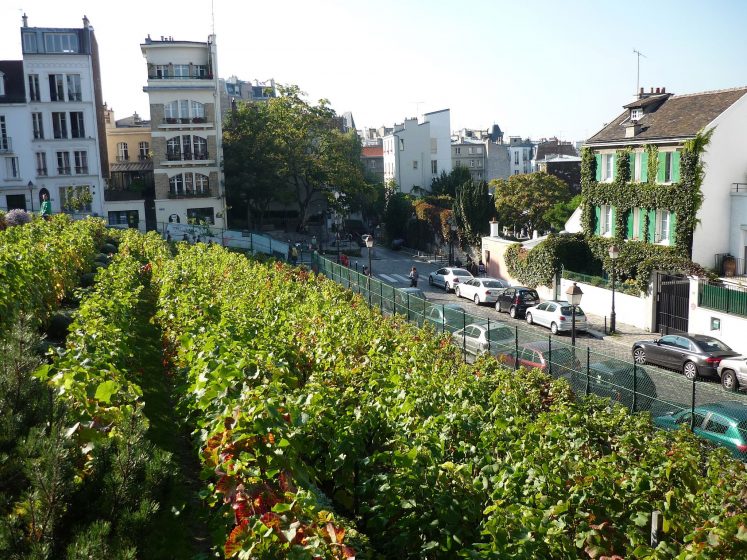City Blooming Fundamentals Explained
City Blooming Fundamentals Explained
Blog Article
8 Easy Facts About City Blooming Explained
Table of ContentsGetting My City Blooming To WorkThe Facts About City Blooming RevealedCity Blooming for DummiesExcitement About City BloomingThe 10-Minute Rule for City Blooming
Fascinated in growing food available for sale in the City of Chicago? Thinking of beginning a community garden? Changes to the Chicago Zoning Ordinance allow farming uses like neighborhood yards and city ranches in lots of components of the city. Below is a list of regularly asked concerns regarding the policies and policies that growers ought to think about when planning a city farming task.
The zoning modification does not change any type of various other codes managing composting, structure permits, acquiring or leasing City had residential or commercial property, company licenses or environmental contamination. There are existing codes that manage these issues and they stay completely effect and may apply to your project. Community gardens are commonly had or taken care of by public entities, public companies or community-based organizations and preserved by volunteers.
Urban ranches grow food that is planned to be offered, either on a nonprofit or for-profit basis. Because of their commercial objective, urban farms require a service permit. Yes. A community yard is allowed to sell surplus generate that was expanded on website if the sales are accessory or subordinate to the garden's key purpose defined over.
The 5-Minute Rule for City Blooming
The amount of garden compost material can not surpass 25 cubic backyards at any type of given time according to the requirements in 7-28-715 of the City's Municipal Code. Since the soil at many new garden sites requires amending, garden compost, soil, timber chips, or various other materials can be obtained to build or enhance the growing room.

If a structure authorization is called for after that the hoophouse will be thought about an accessory structure. You can learn even more regarding the structure authorization requirements by getting in touch with the Department of Buildings. The 25,000-square-foot dimension limitation is intended to stop a solitary neighborhood garden from controling a given block or interfering with the block's existing domestic or commercial character.
The limitation does not relate to gardens found in Public Open Room (POS) areas. Can there be more than one community garden that is 25,000 square feet on a single block? Yes. The size restriction applies to specific gardens, not to individual blocks. No. Fencing is not needed, nonetheless, gardens that have large auto parking areas might be required to mount fencing or other landscaping functions.
An Unbiased View of City Blooming
B1 & B2 districts call for that all commercial use tasks be conducted inside your home. Is fence required for metropolitan ranches? Fences might be needed, along with landscaping and screening, for certain vehicle parking areas and exterior job or storage space locations depending on place and the specific task taking location.
Urban ranches need building authorizations and zoning authorizations prior to construction (indoor plants). Other types of city evaluation might be required depending on specific structures, tasks, dimension, landscaping, licensing, public heath and stormwater management concerns.
Yes. The kind of permit is figured out by what is occurring at the site. The Division of Business Affairs and Consumer Protection can help determine the details kind of service certificate that's needed. Yes. Off street parking is required for most commercial jobs in Chicago. The required variety of car park rooms is based on the number of staff members working on site and not the square video of the expanding space.
The Best Strategy To Use For City Blooming

A metropolitan farm can offer compost material produced on site, nonetheless, the procedure needs to comply with the guidelines in 7-28-715 of the Chicago Municipal Code. Aquaponic systems are view enabled inside your home on metropolitan farms in many zoning areas.
Approximately five hives or colonies of honey might be maintained as an accessory use. Beekeepers have to register with the Illinois Division of Farming. For even more info regarding the recommended zoning modification you might call the Department of Housing and Economic Development, Bureau of Preparation and Zoning at 312.744.8563.
, which takes area in country areas at the edge of suburban areas.
Some Known Facts About City Blooming.
It can entail a motion of organic farmers, "foodies" and "locavores", that seek to create social networks established on a shared values of nature and neighborhood holism. These networks can establish using official institutional support, ending up being incorporated into local town as a "transition community" movement for lasting city advancement.
In either instance, the more direct access to fresh vegetable, fruit, and meat products that might be realised with metropolitan farming can improve food security and food security while lowering food miles, resulting in reduced greenhouse gas emissions, consequently contributing to climate modification reduction. Several of the first evidence of metropolitan agriculture comes from Mesopotamia.
Report this page